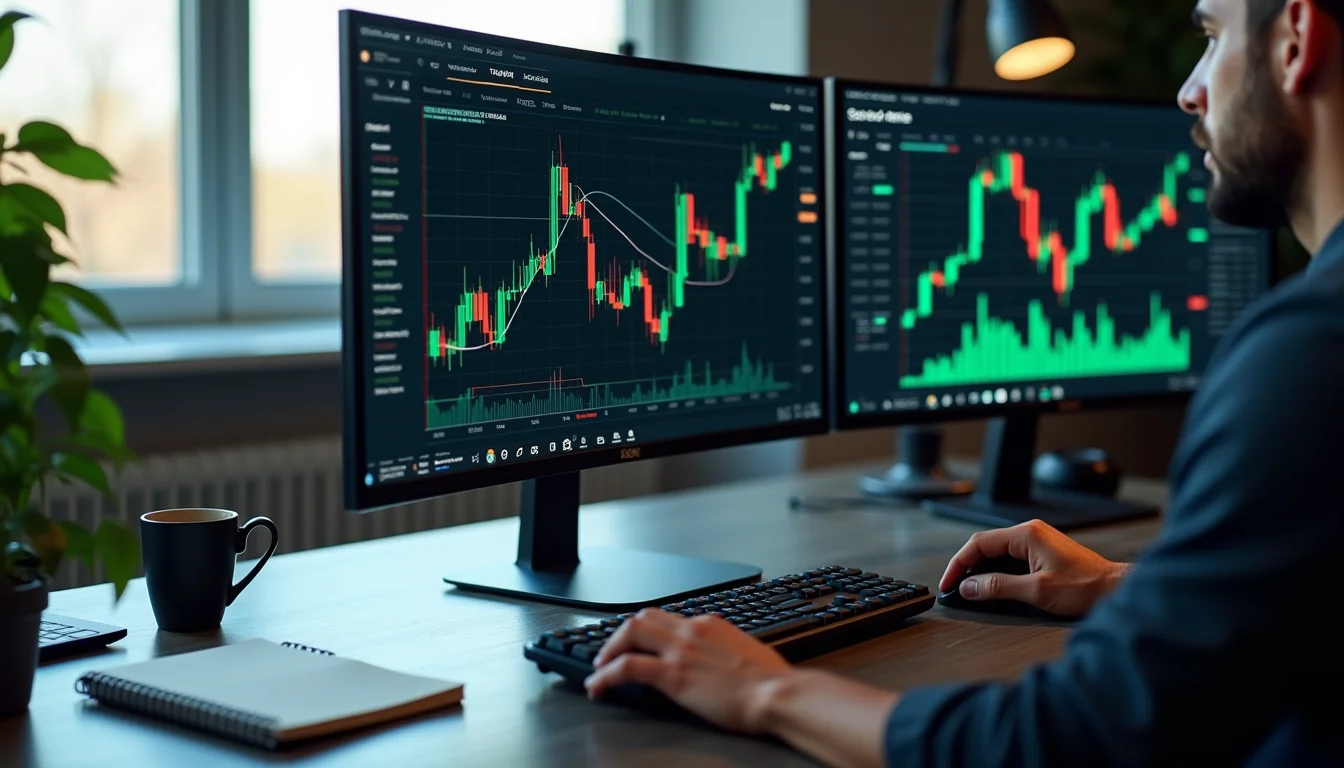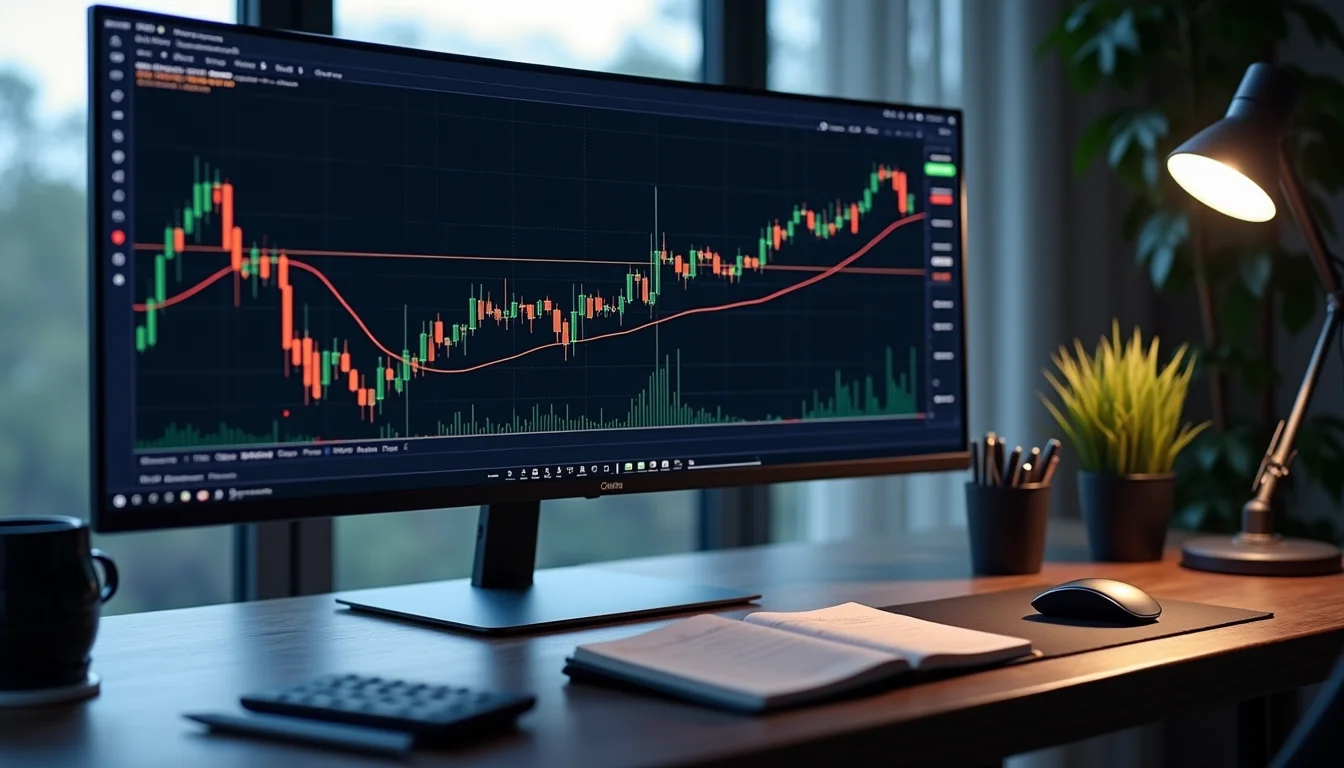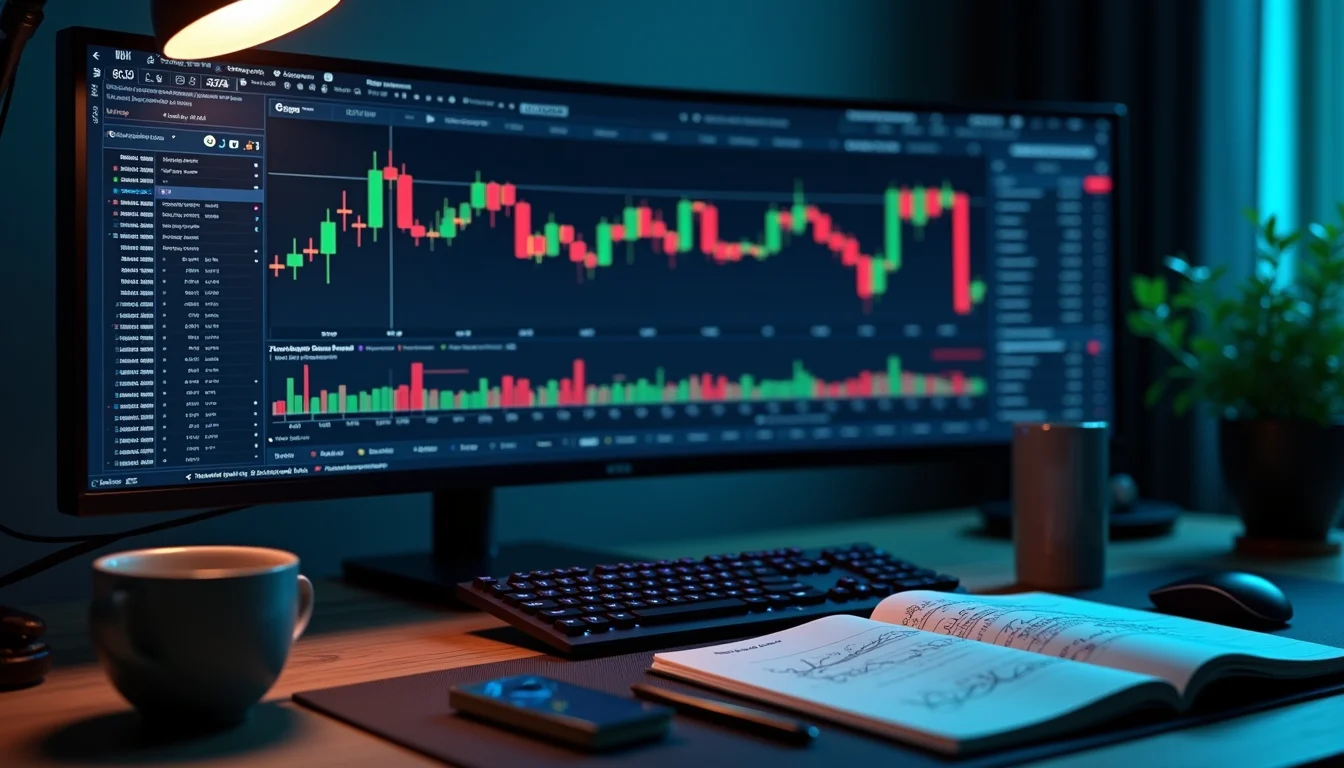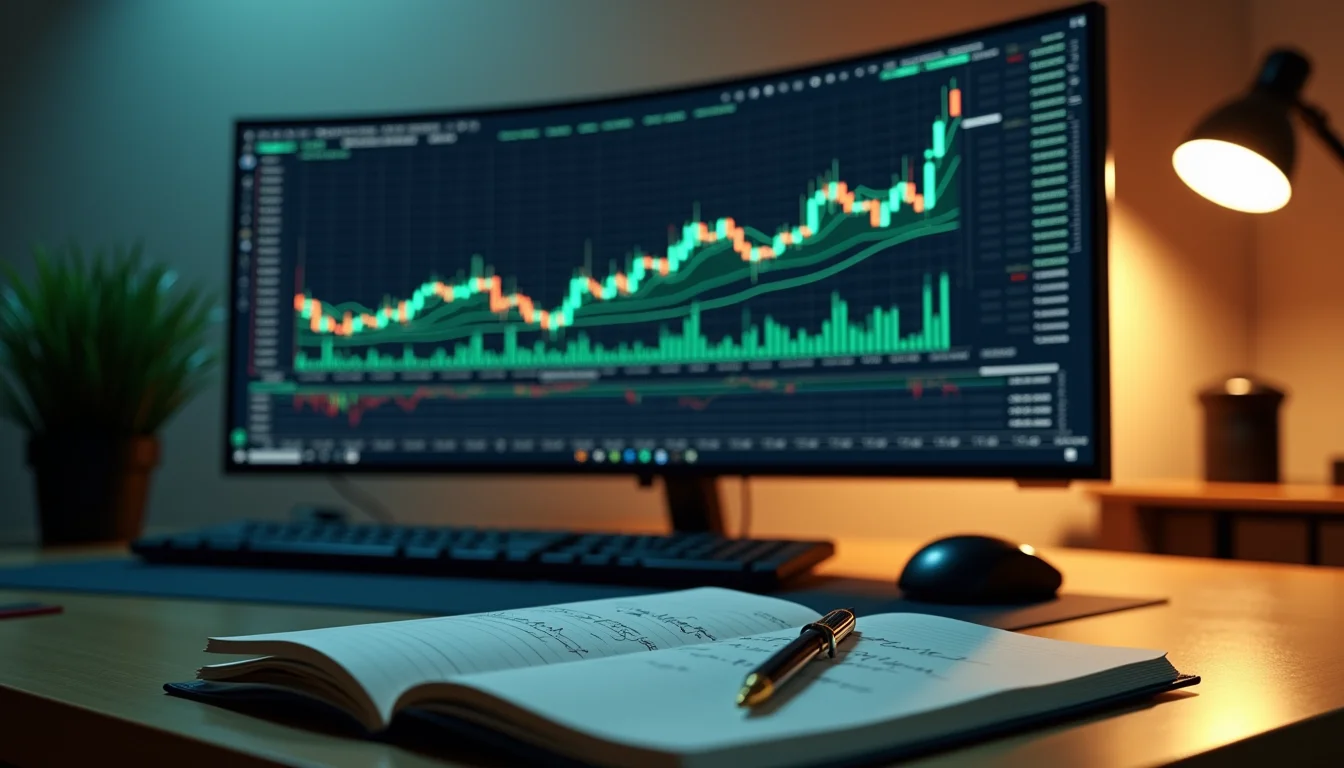Introduction
I remember my first year trading like it was yesterday. Sitting there watching the charts, making impulsive decisions, and wondering why my account kept shrinking despite having what I thought were "great ideas." The problem wasn't my market intuition - it was my complete lack of understanding about how to trading properly. I was jumping in without a plan, emotional, and treating the markets like a casino rather than a business.
If you're reading this, you've probably experienced similar frustrations. Maybe you've watched positions move against you immediately after entering, or perhaps you've taken profits too early only to watch the trade continue in your favor. These are universal experiences for traders learning how to trading effectively. The good news? With the right framework and discipline, anyone can develop the skills needed to trade consistently.
In this guide, I'll share the exact strategies and mindset shifts that transformed my trading from amateur guessing to professional execution. We'll cover everything from foundational concepts to advanced techniques that I've refined over thousands of trades across various market conditions. Whether you're completely new to markets or have some experience but lack consistency, you'll find actionable insights here.
Understanding Market Structure and Timeframes
Before placing a single trade, you need to understand the battlefield. Markets aren't random - they operate within structures that repeat across different timeframes. Learning to read these structures is your first step in mastering how to trading profitably.
Multiple Timeframe Analysis
One of my biggest breakthroughs came when I stopped looking at just one chart. Now I analyze three timeframes minimum before any trade. For day trading, I might look at the 15-minute for entry, 1-hour for context, and 4-hour for trend direction. For swing trading, I use daily, weekly, and monthly charts. This approach prevents you from buying into resistance or selling into support on higher timeframes.
Here's a practical example: Last month, EUR/USD looked bullish on the 1-hour chart, but the daily was approaching a major resistance level at 1.0950 that had rejected price three times previously. Recognizing this, I waited for the daily to either break through or reject at that level rather than taking the 1-hour signals blindly. The pair rejected at 1.0948 and fell 180 pips over the next two days.
Market Participants and Their Behavior
Understanding who's moving markets at different times changed everything for me. Institutional traders operate differently from retail, and their activity creates predictable patterns. London session (3 AM - 12 PM EST) typically has the highest volume in forex, creating strong directional moves. New York session (8 AM - 5 PM EST) often continues or reverses these moves. Asian session (7 PM - 4 AM EST) tends to be range-bound.
I structure my trading around these sessions. For momentum strategies, I trade the London open. For reversal strategies, I often wait for New York session when liquidity can cause exhaustion moves. Aligning your approach with market flow rather than fighting it is crucial when learning how to trading successfully.
Developing Your Trading Edge
Your edge is what separates you from the 90% of traders who fail. It's not about being right all the time - it's about having a statistical advantage that plays out over dozens or hundreds of trades.
Finding Your Strategy Fit
I've tried countless strategies over the years, and what works for one person might not work for another. Your personality, schedule, and risk tolerance should dictate your approach. If you have a full-time job, scalping probably isn't realistic. If you're risk-averse, trend following might suit you better than breakout trading.
My current primary strategy is a momentum-based approach using the TradeMaster Pro Strategy on TradingView. It combines volume analysis with price action patterns to identify high-probability entries. Over my last 100 trades with this system, I've maintained a 64% win rate with an average risk-reward of 1:2.3. That's the power of having a defined edge.
Backtesting and Validation
Never trade a strategy you haven't validated. I backtest every approach across at least 200-300 historical trades before risking real money. The TradingView platform makes this relatively easy with its replay feature and extensive historical data.
When backtesting, pay attention to these key metrics:
- Win rate percentage
- Average profit per trade
- Maximum drawdown
- Profit factor (gross profits/gross losses)
- Longest losing streak
A strategy with a 40% win rate can be highly profitable if the average winner is three times the average loser. Conversely, a 70% win rate strategy can lose money if losses are much larger than wins.
Risk Management: The Real Secret to Longevity
I've known brilliant analysts who went bust and mediocre technicians who built wealth. The difference was always risk management. This is the most critical component of learning how to trading for the long term.
Position Sizing Mathematics
I never risk more than 1-2% of my account on any single trade. This isn't just a cliché - it's mathematical survival. If you risk 5% per trade, just six consecutive losses (which happens to every strategy) puts you down 26%. To recover from that, you need a 35% return just to break even. At 2% risk, six losses equal an 11% drawdown, requiring only 12% to recover.
Here's my exact position sizing formula:
- Account balance: $10,000
- Risk per trade: 1% = $100
- Entry: $50, Stop loss: $48 (2 points risk)
- Position size = $100 risk / 2 points = 50 shares
This simple calculation takes emotions out of position sizing and ensures you survive to trade another day.
Correlation and Portfolio Risk
Early in my career, I thought I was diversified by trading different currency pairs. Then I learned that EUR/USD, GBP/USD, and AUD/USD all tend to move together. I was effectively taking the same trade multiple times without realizing it.
Now I monitor correlation between my positions and ensure I'm not overexposed to any single market factor. If I'm long EUR/USD, I might avoid other dollar pairs or size them smaller to maintain balanced exposure. This approach saved me during the March 2020 volatility when seemingly uncorrelated assets moved in lockstep.
Technical Analysis That Actually Works
After years of testing every indicator under the sun, I've simplified my approach to focus on what actually moves markets: price, volume, and key levels.
Price Action Patterns
I've largely abandoned complicated indicators in favor of clean price action. The patterns I watch for include:
- Higher highs/higher lows in uptrends
- Lower highs/lower lows in downtrends
- Breakouts from consolidation with increased volume
- False breakouts that trap one side before reversing
Last Thursday, I spotted a classic false breakout on GBP/JPY. Price briefly broke above 183.50 resistance, triggering buy stops, then rapidly reversed to close below the level. This trapped longs and provided a beautiful short entry that delivered 85 pips over the next session.
Support and Resistance Dynamics
Markets have memory. Previous turning points become future support or resistance. I mark these levels on my charts and watch how price reacts there. The more times a level has been tested, the more significant it becomes.
I categorize levels as major (weekly/monthly), intermediate (daily), and minor (intraday). I align my trades with the major levels and use intermediate ones for entries. This framework is detailed further in my guide to finding profitable trading strategies.
Trading Psychology and Discipline
The markets are a constant test of emotional control. I've seen talented traders blow up because they couldn't manage their psychology.
Managing Emotional Extremes
After a losing streak, the temptation to "make it back" is powerful. Similarly, after a winning streak, overconfidence can lead to sloppy trading. I have strict rules that trigger a trading break:
- Three consecutive losses = stop trading for the day
- Drawdown of 5% from monthly high = reduce position sizes by half
- Drawdown of 10% = complete trading break for one week
These rules have saved me from destructive behavior multiple times. The market will always be there tomorrow - preserving capital during emotional turmoil is more important than any single trade.
Journaling for Improvement
I've maintained a detailed trading journal for eight years. Every trade includes:
- Setup and reasoning
- Emotional state (rated 1-10)
- Execution quality (rated 1-10)
- Screenshot of the chart
- Post-trade analysis
Reviewing this journal weekly has been more valuable than any book or course. Patterns emerge - maybe I consistently mishandle a certain setup, or perhaps my winning trades share characteristics I hadn't noticed. This feedback loop is essential for anyone serious about learning how to trading profitably.
Building Your Trading Plan
A trading plan is your business plan. Without one, you're just gambling. My plan evolved significantly over time, but these core components remain constant.
Defining Your Edge Clearly
Your plan should specify exactly what setups you trade, on what timeframes, with what criteria. Vague plans lead to inconsistent execution. Mine reads like a checklist - if all conditions aren't met, I don't take the trade, no exceptions.
For example, my momentum breakout setup requires:
- Consolidation of at least 5 bars on the 1-hour chart
- Volume expanding on breakout
- Alignment with higher timeframe trend
- Clear stop loss level with 1:2 risk-reward minimum
This specificity removes guesswork and emotion from my trading decisions.
Adapting to Changing Markets
Markets evolve. Strategies that worked in low volatility might fail in high volatility environments. My plan includes guidelines for adjusting to different market regimes.
When VIX spikes above 25, I:
- Reduce position sizes by 50%
- Widen stop losses to account for increased volatility
- Focus on longer timeframes (4-hour+ instead of 1-hour)
- Avoid trading around major news events
These adjustments helped me navigate the 2022 volatility much better than my rigid approach during the 2017 low-volatility environment.
Advanced Tips From the Trading Trenches
After thousands of trades, you pick up nuances that most beginners overlook. Here are three advanced concepts that significantly improved my performance once I implemented them.
Order Flow Analysis: Beyond basic technicals, understanding where orders cluster provides an edge. I watch for large option expiries, institutional order levels, and liquidity pools. Last month, noticing a concentration of put options at 4500 on SPX allowed me to anticipate a bounce at that level for a quick 1.5% gain.
Seasonal and Time-Based Patterns: Markets exhibit recurring patterns based on time of day, day of week, and season. December tends to be bullish (Santa Rally), while September is historically weak. The first trading day of the month often sees inflows from retirement contributions. Aligning with these tendencies improves odds.
Multi-Asset Correlation Trading: Sometimes the best trade isn't in your preferred market. When USD strength was apparent across forex, commodities, and bonds recently, I shorted EUR/USD rather than trying to pick stock market direction. This cross-asset thinking provides more opportunities and confirms thesis.
The key with advanced techniques is integrating them gradually. Master the basics first - proper risk management and a simple strategy will take you further than complex methods executed poorly. For more on developing foundational skills, see my complete trading strategy guide.
Wrapping Up Your Trading Education
Learning how to trading profitably is a journey, not a destination. The markets constantly test your adaptability, discipline, and emotional control. What separates successful traders isn't some secret indicator or magical system - it's consistent execution of sound principles over hundreds of trades.
The framework I've shared - understanding market structure, developing an edge, rigorous risk management, clean technical analysis, psychological discipline, and a detailed trading plan - provides the foundation you need to build upon. Your specific strategies will evolve as you gain experience, but these core principles remain constant.
Ultimately, trading success comes down to treating it as a serious business rather than entertainment or gambling. The traders who approach markets with professionalism, continuous learning, and strict risk management are the ones who survive and thrive long-term.
If you're ready to take the next step, I encourage you to reach out with specific questions or explore our proven trading strategies designed to give you a measurable edge. The markets offer opportunity every day - the question is whether you'll be prepared with the right knowledge and tools when your setup appears.
Common Questions About Learning How to Trading
How much capital do I really need to start trading?
I recommend at least $5,000-$10,000 for serious trading. While you can technically start with less, proper position sizing becomes difficult below $5,000. With a $2,000 account risking 1% ($20), transaction costs and spread become significant factors. Start with what you can afford to lose completely, but understand that severely undercapitalized accounts face mathematical disadvantages.
What's the fastest way to improve my trading skills?
Screen time combined with deliberate practice. Watching markets move in real-time teaches patterns no book can convey. But mindlessly watching charts won't help - you need a framework. I suggest picking one strategy, paper trading it for 2-3 months while journaling every trade, then transitioning to small live sizes. Review your journal weekly to identify repeating mistakes and patterns.
How do I know if a strategy actually works?
Statistical validation through rigorous backtesting. Before I trade any approach live, I require at least 200 historical trades showing a positive expectancy. The Pine Script documentation can help you build and test strategies systematically. Be wary of strategies that look great on a few cherry-picked charts but haven't been statistically validated across various market conditions.
Why do I keep making the same mistakes repeatedly?
This is usually a discipline or psychological issue rather than a knowledge gap. Most traders understand what they should do - they just don't do it consistently. Implementing trading rules with concrete consequences for violations helps. My "three losses and done" rule forced me to be more selective with entries. Sometimes the best trade is no trade at all - patience is a position.
How long until I become consistently profitable?
Realistically, 1-3 years for most traders. This isn't what beginners want to hear, but markets have a steep learning curve. The first year is usually about survival and not blowing up. Year two involves refining your approach. By year three, many traders achieve consistency if they've maintained discipline and continuous learning. The journey requires patience - focus on process over profits, and the results will follow.



